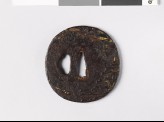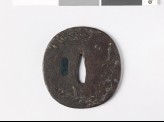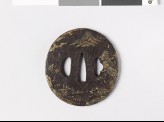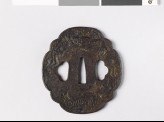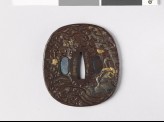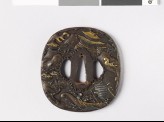The A. H. Church Collection of Japanese Sword-Guards (Tsuba)
An unpublished catalogue of the A. H. Church collection of Japanese sword-guards (tsuba) by Albert James Koop.
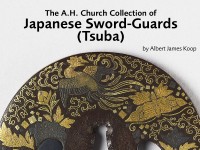
The founder, Jakushi I (Kizayemon), of Nagasaki in Hizen, was originally a painter, chiefly of Chinese scenery in the manner of the later Ch’in Dynasty, who later translated his graphic work into metal. The miniature landscapes characteristic of his style are produced by an initial etching of the iron ground, which is then finished with chisel-work and enlivened with figures and other details in minute incrustation of the soft metals or in nunome overlay of gold graduated in thickness so as to resemble washes of the precious metal. Another favourite subject is the dragon amid clouds, boldly conceived in the Chinese manner.
Jakushi I took the Buddhist vows, whence his signature Kiyō-sanjin, “Hermit of Nagasaki”. His son, Jakushi II, surpassed him in ability and several imitators met with varying success. The work of the Tanaka (Tōriūsai), has characteristics in common with that of the present group.
N.B. – The usual Jakushi technique just described is to be understood in the first four guards.
Notice
Object information may not accurately reflect the actual contents of the original publication, since our online objects contain current information held in our collections database. Click on 'buy this publication' to purchase printed versions of our online publications, where available, or contact the Jameel Study Centre to arrange access to books on our collections that are now out of print.
© 2013 University of Oxford - Ashmolean Museum

